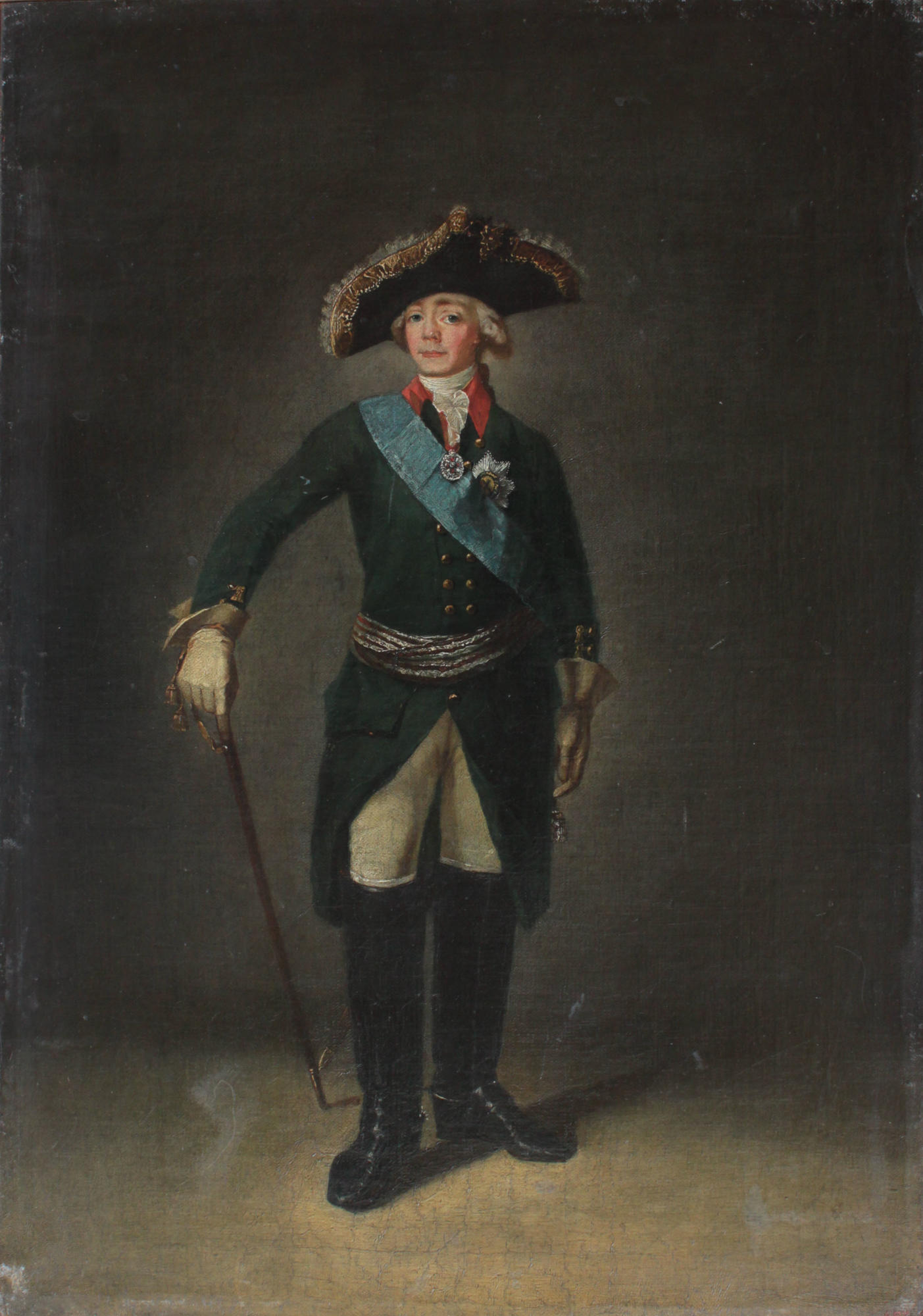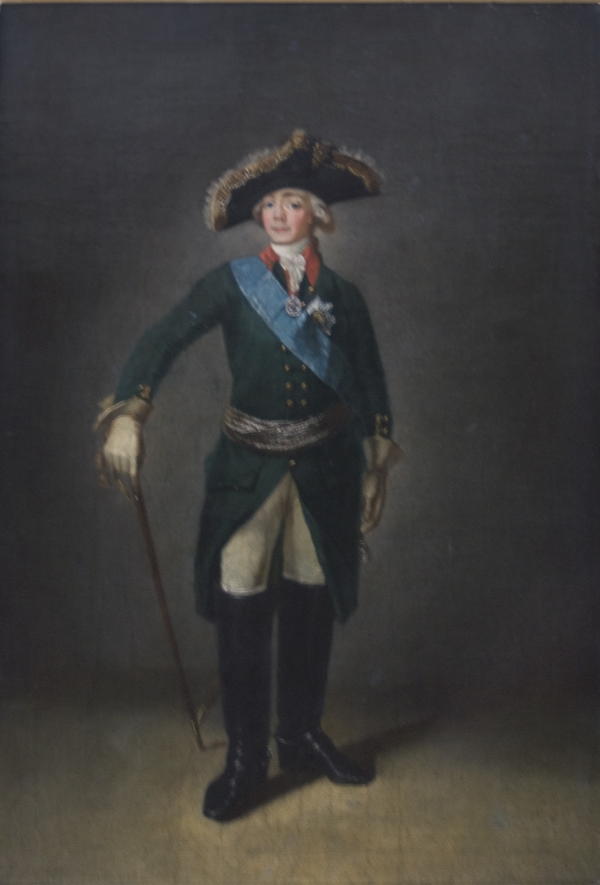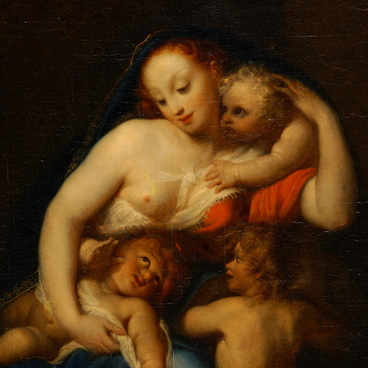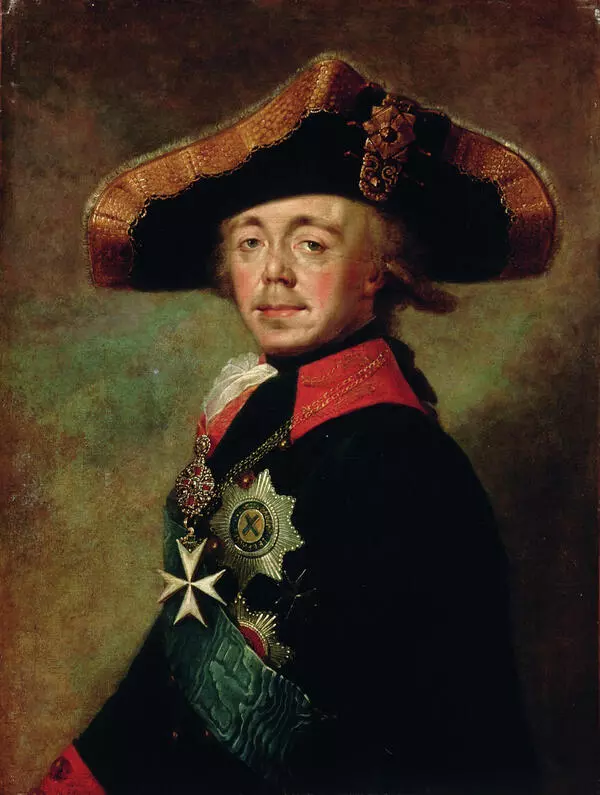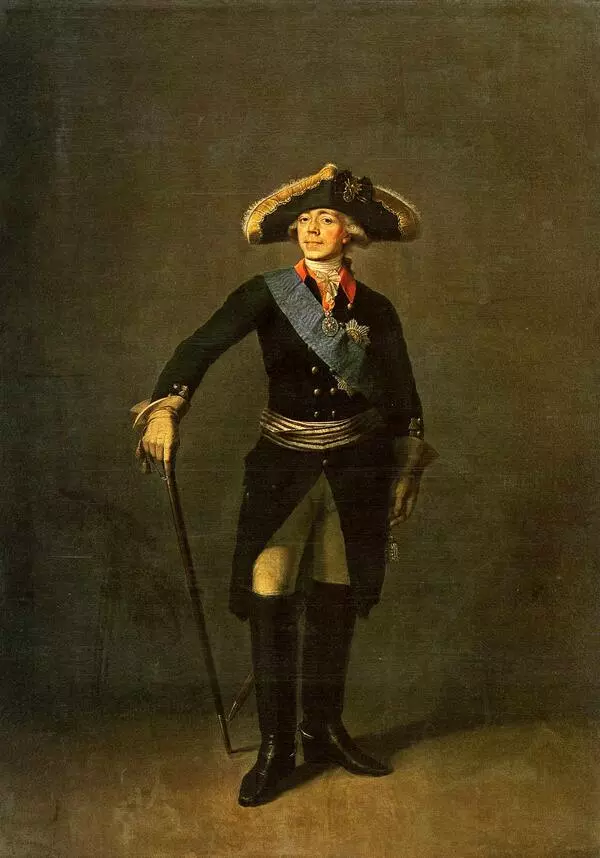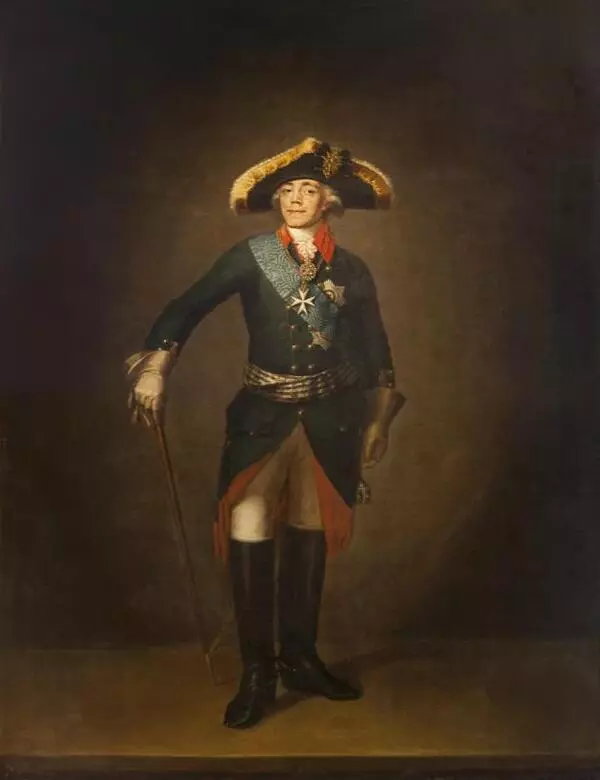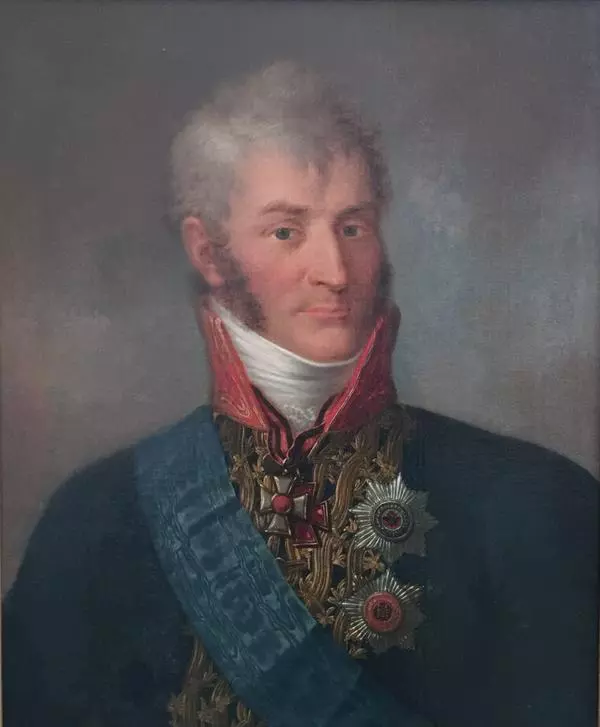Shortly before the coronation of Paul I, Stepan Shchukin, a portrait painter and a student of outstanding portraitist of the 18th century Dmitry Levitsky, was commissioned to paint a ceremonial portrait of the future emperor. The mourning for Catherine II lasted for four months, from November 1796 to April 1797. By the end of that period, the portrait was ready.
The monarch remained pleased with the work and among other things granted the artist permission to make author’s copies of his work. The portrait was intended to be a coronation portrait, but its idea was very original and unexpected. The painting stands out from a number of Russian imperial ceremonial portraits, it has no analogues among paintings of the day. Many artists, both Russian and foreign, painted Emperor Paul I, but all of their works contain elements of traditional iconography — the system of depicting the Imperial Person. It is strict formality, and indispensable attributes of the monarchical power — heavy ermine robes, gold embroidered clothes and sparkling regalia.
In the iconography approved by Emperor Paul I, Shchukin turned the traditional scheme of a ceremonial portrait into a plot that can be called “The Emperor in anticipation of the coronation celebrations”. The Emperor is portrayed in the garment of the Preobrazhensky Life-Guard Regiment, with St. Andrew’s blue ribbon against a smooth empty grey-green background, with a large black tricorn on his head. Stepping back from theatricalization, Shchukin chose his own way of conveying the emperor’s inner loneliness hidden under the mask of a “stern messenger of power”. The ultimate laconicism of the composition and the colors are in harmony with Paul’s mental world. The artist achieves the impression of a significant personality without involving ceremonial accessories: a cane instead of a sword and a marshal’s baton accentuates the motive of wandering in this desolate space of the portrait.
Shchukin perceived the image of the future crowned Emperor Paul I as complex and at the same time integral. The portrait turned out to be both ceremonial and full of life and became extremely popular. Shchukin repeated and changed it many times, and today one can find author’s copies in the collections of many museums. The portrait became the most successful one in the monarch’s extensive iconography, and the artist himself became one-work author.
The monarch remained pleased with the work and among other things granted the artist permission to make author’s copies of his work. The portrait was intended to be a coronation portrait, but its idea was very original and unexpected. The painting stands out from a number of Russian imperial ceremonial portraits, it has no analogues among paintings of the day. Many artists, both Russian and foreign, painted Emperor Paul I, but all of their works contain elements of traditional iconography — the system of depicting the Imperial Person. It is strict formality, and indispensable attributes of the monarchical power — heavy ermine robes, gold embroidered clothes and sparkling regalia.
In the iconography approved by Emperor Paul I, Shchukin turned the traditional scheme of a ceremonial portrait into a plot that can be called “The Emperor in anticipation of the coronation celebrations”. The Emperor is portrayed in the garment of the Preobrazhensky Life-Guard Regiment, with St. Andrew’s blue ribbon against a smooth empty grey-green background, with a large black tricorn on his head. Stepping back from theatricalization, Shchukin chose his own way of conveying the emperor’s inner loneliness hidden under the mask of a “stern messenger of power”. The ultimate laconicism of the composition and the colors are in harmony with Paul’s mental world. The artist achieves the impression of a significant personality without involving ceremonial accessories: a cane instead of a sword and a marshal’s baton accentuates the motive of wandering in this desolate space of the portrait.
Shchukin perceived the image of the future crowned Emperor Paul I as complex and at the same time integral. The portrait turned out to be both ceremonial and full of life and became extremely popular. Shchukin repeated and changed it many times, and today one can find author’s copies in the collections of many museums. The portrait became the most successful one in the monarch’s extensive iconography, and the artist himself became one-work author.
